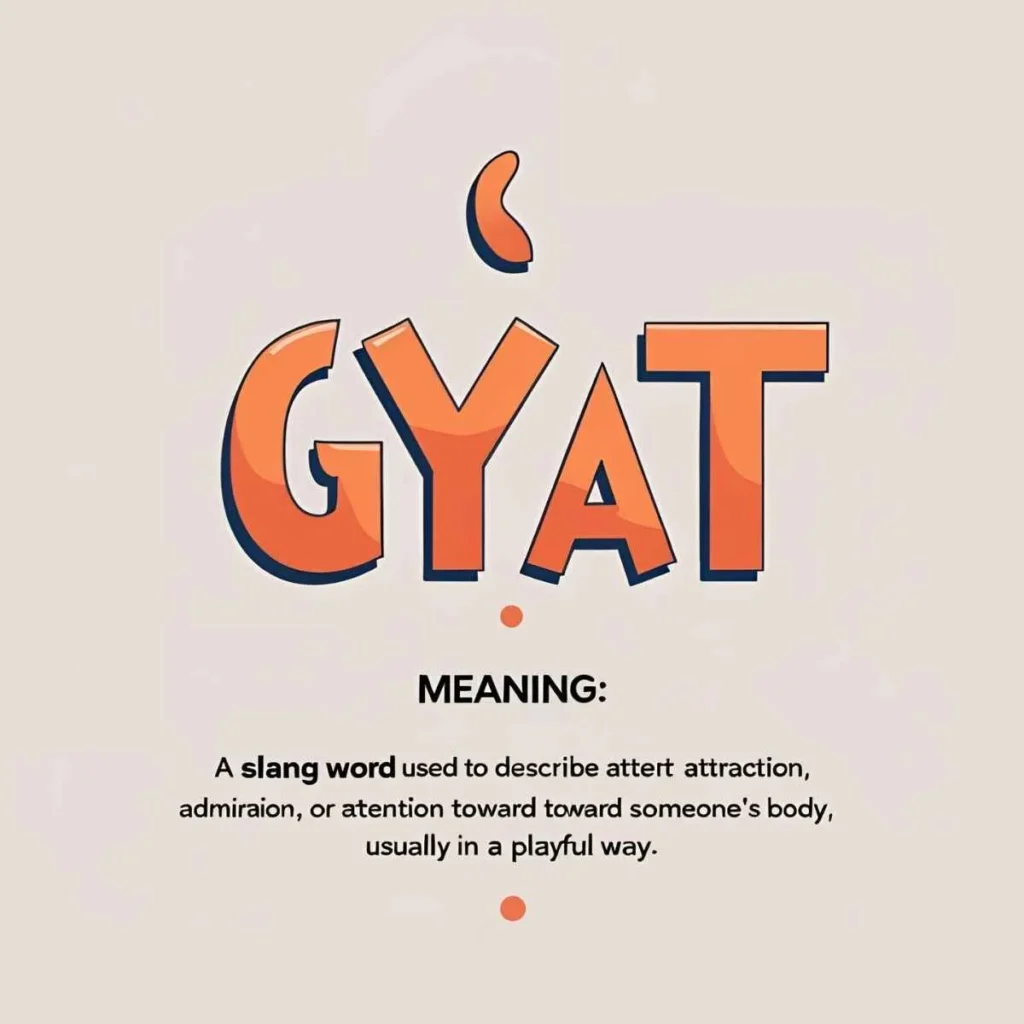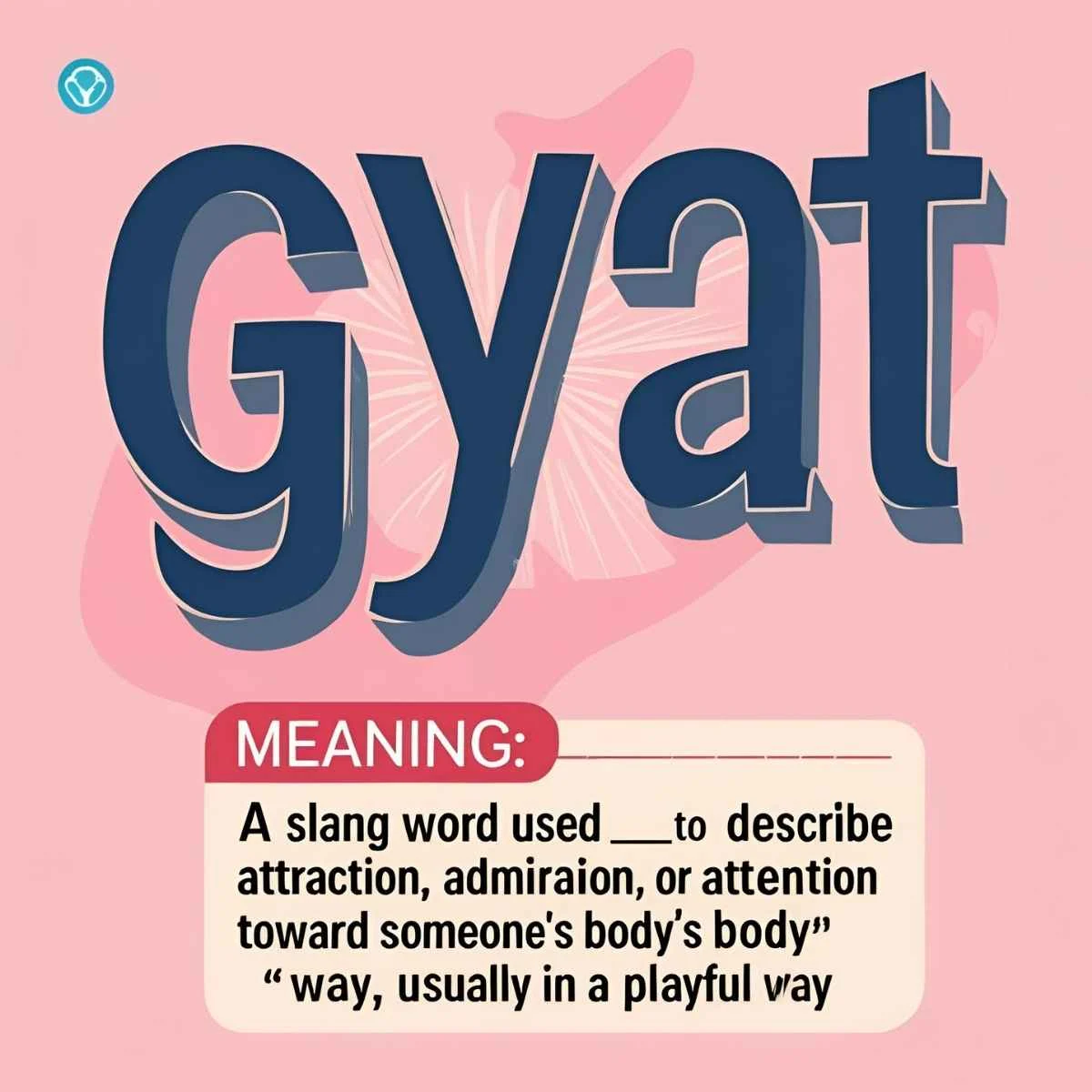Language on the internet changes every day, and new slang often takes over social media before most people even realize it. One such word is “gyat”, a term that’s trending in chats, memes, and TikTok videos. If you’ve come across this word and felt confused, you’re not alone.
This guide will break down what gyat means, where it came from, how it’s used in texting and online, and how it differs across platforms. By the end, you’ll be able to understand and even use it naturally.
What Does Gyat Mean?
At its core, gyat is an internet slang word used to describe attraction, admiration, or attention toward someone’s body, usually in a playful way. It often shows up when people comment on someone’s looks, especially when pointing out physical features.
- Example:
- “Bro, did you see her? Gyat!”
- “He walked in the room and everyone was like gyat.”
Unlike formal compliments, gyat is casual and exaggerated. It’s less about romance and more about expressing surprise or excitement. Think of it as the online equivalent of saying “Wow!”
Gyat Meaning in Text

When used in text messages, gyat is often a shorthand way of reacting quickly. Instead of typing a full compliment, people just drop “gyat” in the chat.
- If someone sends a photo: “Gyat, you look amazing.”
- If a friend shows off new clothes: “Bro gyat, those shoes are fire.”
The tone matters. In text, gyat can be playful, flirty, or even just friendly. Context will tell you whether it’s meant as a joke or an actual compliment.
👉 In short: In texting, gyat = a quick, dramatic reaction word that saves time while still carrying impact.
Gyat Meaning in Social Media
On TikTok, Instagram, and Twitter (X), gyat has become a trending word and meme. Creators use it in captions, comments, and even sound effects. You’ll often see it paired with reactions like “GYATTTT” in all caps, making it even more dramatic.
- On TikTok, clips often exaggerate it with sound effects like “gyattttt” when showing off funny or attractive content.
- On Instagram, it’s common in comments when people hype up selfies or outfit posts.
- On Twitter (X), it’s used as part of meme culture, where exaggeration is the point.
Social media gave gyat its popularity — and its exaggerated spelling variations like “gyatt,” “gyatttt,” or “gyatttttt” are all part of the trend.
Origin of Gyat
The word gyat comes from a slang pronunciation of “gyaa!”, an exaggerated exclamation similar to “damn!”. It was popularized by Twitch streamers and TikTok influencers, especially within gaming and reaction content.
The moment a streamer saw something shocking or attractive, they’d yell “GYAT!” in a funny, exaggerated way. From there, fans and followers started using it in comments, memes, and chats, spreading it across platforms.
👉 In other words, gyat started as a streamer sound effect and turned into global Gen Z slang.
Gyat Meaning for Boys
When boys use gyat, it’s usually:
- A way of hyping each other up (“Bro, your outfit is clean today. Gyat!”).
- A flirty comment when texting someone they’re interested in.
- A funny exaggeration to react to memes, videos, or random posts.
For boys, gyat is about confidence and reaction. It’s often less serious and more about being dramatic, funny, or supportive.
Gyat Meaning for Girls
When girls use gyat, it’s often playful and supportive. For example:
- Commenting “gyat” on a best friend’s post to hype them up.
- Using “gyat” in TikTok captions as a funny, self-confident expression.
- Sometimes used jokingly in group chats when reacting to pictures or memes.
Girls tend to use gyat in a friendly, positive tone, often less about flirting and more about celebrating confidence and fun moments.
How to Use Gyat in Conversations
Want to sound natural using gyat? Here are some easy examples:
- With friends:
- “Gyat, that fit is reckless.”
- “Bro gyat, calm down with that flex.”
- In texting:
- “You posted that selfie? Gyat!”
- “Gyat, you didn’t tell me you got a new haircut.”
- On social media:
- Commenting “GYATTT” under someone’s post.
- Using “gyat” in memes, TikTok edits, or as a reaction word.
👉 Rule of thumb: Use gyat when you want to exaggerate excitement or admiration in a casual, internet-style way.
Comparison: Gyat vs. Other Slang Words
To understand gyat better, let’s compare it with similar slang:
| Slang Word | Meaning | Tone | Example |
|---|---|---|---|
| Gyat | Exaggerated admiration or reaction | Funny, dramatic, casual | “GYAT, she’s stunning.” |
| Slay | Crushing it / doing great | Positive, empowering | “You slayed that outfit.” |
| Rizz | Charisma / flirting skill | Cool, flirty | “He’s got mad rizz.” |
| Sheesh | Expressing surprise | Playful, hype | “Sheeeesh, that’s expensive.” |
As you can see, gyat is the loudest and most exaggerated of the group, making it perfect for internet humor.
FAQs About Gyat
Q1: Is gyat a bad word?
No. Gyat isn’t offensive — it’s just slang. But tone and context matter.
Q2: Who started saying gyat?
It became popular through Twitch streamers and spread via TikTok memes.
Q3: Can gyat be used seriously?
Not really. It’s mostly playful, funny, or exaggerated.
Q4: Is gyat only for Gen Z?
While Gen Z popularized it, anyone online can use it.
Q5: Can I use gyat in professional settings?
Definitely not. It’s internet slang — keep it for casual chats only.
Featured Snippet (Quick Answer)
What does gyat mean?
“Gyat” is an internet slang word used to express admiration, surprise, or attraction in a funny, exaggerated way. It originated from Twitch streamers and spread across TikTok and social media.
Conclusion
The slang word gyat shows how quickly language evolves online. What began as a streamer’s exaggerated reaction turned into a viral Gen Z expression for admiration, hype, and excitement.
Whether you’re texting friends, commenting on TikTok, or joining in on meme culture, using gyat is a fun way to stay in tune with internet humor. Just remember — it’s playful, not formal, and always best used in casual conversations.





